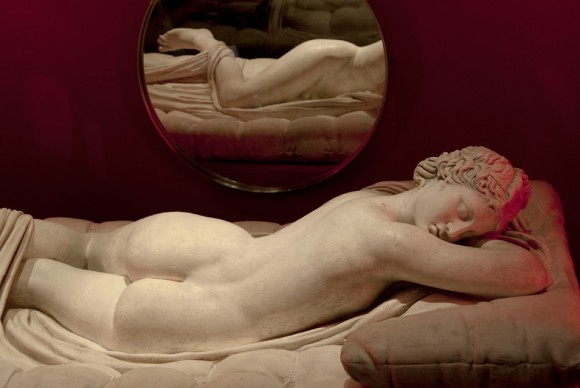Lust & Vice: Major Exhibition Filling Three Rooms and Five Display Cases at The Nationalmuseum
March 25, 2011 by All Art News
Filed under Art Events & Exhibitions
STOCKHOLM.- The Nationalmuseum presents Lust & Vice, a major exhibition filling three rooms and five display cases. The exhibition runs from 24 March to 14 August 2011. Over 200 works from the 16th century to the present day, mostly little-known treasures from the museum’s own collection, illustrates how views of sexuality, virtue and morality have changed over the centuries.
The exhibition includes works coloured by the religious teachings of the 16th and 17th century, which held that sexual relationships could only take place inside marriage. However, there was a big difference between the behaviour the church prescribed for ordinary people and the liberties taken by the elite. The exhibition continues by examining the upper-class view of marriage in the 18th century: a social institution that left the parties to seek true passion elsewhere. In other words, an attitude diametrically opposed to that of the church. The 18th century was a time of double standards: one for the masses and another for the enlightened elite. From the 19th century onward, the city becomes a central theme. Large-scale urbanization frequently led to anonymous sexual encounters and prostitution. Secret images for private consumption coexisting with moralistic public art were another by-product of urbanization.
The exhibition presents examples of how virtue and sin have been depicted in art through the ages. One of the display cases examines how girls were brought up to lead a virtuous life in order to be good marriage material. Exhibits include a real chastity belt on loan from Nordiska museet. One wall in the first room displays paintings of women’s bottoms – an erotic reference that was long considered sinful because sex, besides taking place inside marriage, required eye contact in order to be morally acceptable. Artists managed to paint erotic motifs by portraying myths or biblical scenes, often with moralistic undertones alluding to the consequences of a sinful lifestyle.
The older material from the museum’s own collection clearly shows that the erotic images were created with a male audience in mind. The contemporary works on loan for the exhibition, by artists such as Kristina Jansson, Gisela Schink and Lars Nilsson, question the ownership of the perspective. Much of the material on show was intended for a very small audience but is now in the public domain as part of a museum collection. Erotically charged paintings from the early 18th century often hung in men’s private quarters. As long ago as the mid-19th century, museum staff struggled with the issue of displaying erotic or sexually suggestive art. We can see how some 19th-century museums took a thoroughly moralistic approach, for instance by commissioning special fig leaves to hide the genitals of antique sculptures. The exhibition also features art rarely seen by the public before, including correspondence between two Swedish artists, Johan Tobias Sergel and Carl August Ehrensvärd, in which they mock a mutual friend who had travelled to Copenhagen to have some fun, attracted by the anonymity that the Danish capital offered.

